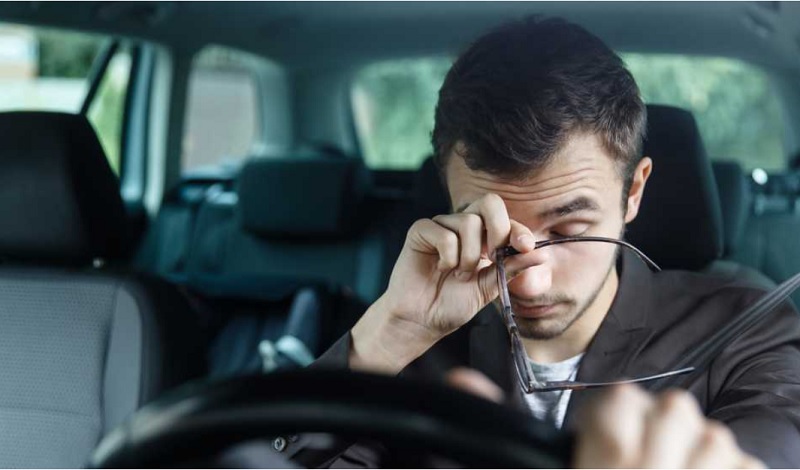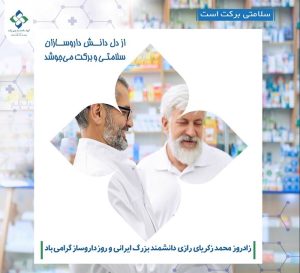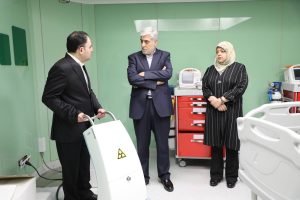
Eyes on Road: Crucial Key to Safety & Preventing Traffic Accidents
Barkat Health & Pharmaceutical Group: Eye health is a critical factor in safe driving. The ability to see clearly and quickly assess the surrounding environment, regardless of weather or road conditions, plays a decisive role in preventing accidents. Vision problems, whether at night or during the day, can significantly reduce a driver’s reaction time and, in many cases, lead to poor decision-making and road incidents. Therefore, paying attention to eye health and conducting regular eye exams can be an effective step in reducing road accidents.
In this context, the national campaign “No to Accidents” has been launched as a collective national movement aimed at reducing road incidents and the severe consequences associated with them. Emphasizing the necessity of public participation in enhancing road safety, this initiative was introduced under the guidance of the President and with the support of the Minister of Health. The campaign, especially focused on holiday and Nowruz travel periods, stresses the need for precise planning and preventive measures to reduce accidents. According to official statistics, in the past two decades, over 400,000 people have lost their lives in traffic accidents in the country, while 6 million others have been injured or disabled. In this regard, giving special attention to eye health and preventing vision problems could significantly help reduce these numbers.
This report examines the importance of eye health in preventing traffic accidents and its connection to the national “No to Accidents” campaign, offering practical solutions for improving driver safety and reducing road incidents.
Eye Health on Driving Ability
Eye health is one of the fundamental pillars of safe driving. The eyes are the first sensory tools that relay vital information from the surrounding environment to the brain. This information helps drivers identify obstacles, road signs, and the behavior of other vehicles, enabling them to make timely and correct decisions. A decrease in visual accuracy or the presence of eye problems can significantly slow down a driver’s reaction time and increase the risk of accidents.
Common Vision Problems & Their Impact on Driving
Several vision issues can negatively impact driving ability, including:
-
Hyperopia (Farsightedness): In this condition, individuals cannot clearly see objects up close. This issue can cause problems when reading road signs or noticing critical details on the road.
-
Myopia (Nearsightedness): This condition refers to the inability to see distant objects clearly. Drivers with myopia may struggle to see obstacles, road signs, or other vehicles at a distance, which can ultimately create dangerous situations.
-
Astigmatism: This condition occurs when light is not evenly focused on the retina, resulting in blurred vision. Astigmatism can cause visual distortion in certain lighting conditions, such as at night or in foggy environments, increasing the risk of accidents.
-
Cataracts: Cataracts are the clouding of the eye lens, a common cause of vision impairment. Individuals with cataracts may experience difficulty seeing in low light or at night, impairing their ability to notice surrounding hazards.
-
Glaucoma (Open-Angle Glaucoma): This condition can lead to peripheral vision loss, preventing the driver from being aware of their surroundings, which is particularly dangerous in tight curves or complex traffic conditions.
Eye Diseases on Driving Ability
Eye diseases can slow down a person’s reaction time and lead to poor decision-making. Vision problems prevent drivers from reacting quickly, identifying obstacles correctly, or accurately judging speed and distance from other vehicles. These issues can lead to serious accidents.
-
Reduced Recognition of Traffic Signs: Drivers with vision problems may not correctly identify warning signs such as speed limits, stop signs, or hazard warnings.
-
Errors in Estimating Distance: Inability to judge the correct distance from other vehicles or obstacles can result in accidents due to sudden changes in road conditions.
-
Delayed Reactions: In high-risk situations, when quick decision-making is essential, drivers with vision problems tend to react 20-30% slower than healthy drivers, increasing the likelihood of accidents.
Accidents Due to Vision Problems
A large number of traffic accidents occur because of vision problems. According to the World Health Organization (WHO), around 30% of road accidents are linked to vision impairments. These accidents often stem from reduced accuracy in recognizing obstacles and making incorrect decisions.
Impact of Vision Problems on Nighttime Accidents
Driving at night is one of the most complex conditions for drivers. Due to reduced ambient light, recognizing obstacles, other vehicles, and traffic signs becomes more difficult. This situation is even more dangerous if the driver has vision problems. A study conducted by the University of Cambridge shows that drivers with vision issues such as astigmatism and cataracts are 50% more likely to be involved in nighttime accidents than other drivers.
Connection Between Eye Diseases & Traffic Accidents
Eye diseases such as glaucoma, astigmatism, and cataracts can significantly increase a driver’s reaction time and limit peripheral vision. This makes it difficult for the driver to react in time to hazards or make accurate decisions. This is especially problematic in conditions like rain, fog, or sunset when ambient light is low, and drivers with eye diseases face major challenges in recognizing road conditions.
Importance of Regular Eye Exams
Regular eye exams are essential for drivers. Many vision problems, especially in their early stages, do not show symptoms, and a person may be unaware of them until the situation becomes dangerous. Regular eye exams can identify many vision issues and prevent accidents.
Importance of Eye Check-ups for Drivers
According to the American Academy of Ophthalmology, drivers should have eye exams every two years, especially if they are over the age of 50. These exams can include routine vision tests, eye pressure assessments for detecting glaucoma, and tests to check for retinal diseases such as diabetic retinopathy.
Eye Exams for Professional Drivers
Professional drivers, who are frequently on the road, should undergo more thorough eye exams. For example, truck and bus drivers must undergo more detailed eye exams to ensure their vision is healthy. In some countries, these exams are legally required for professional drivers.
Raising Awareness & Promoting Eye Health
Raising driver awareness about the importance of eye health can significantly reduce accidents. Many drivers are unaware of their vision problems and may not realize the dangers associated with poor vision while driving. Public awareness campaigns can include educational programs, media outreach, and free consultations for drivers.
Educational Programs
Holding educational sessions for drivers on the importance of eye exams and the impact of vision problems on driving can play a crucial role in raising awareness. Additionally, using mass media such as television, radio, and digital platforms can help spread this message.
Collaborating with Eye Care Professionals
Collaborating with ophthalmologists and optometrists in driver education programs can yield better results. Holding consultations and eye assessments as part of public campaigns can encourage drivers to pay more attention to regular eye exams.
Practical Recommendations to Prevent Accidents
To reduce road accidents caused by vision problems, the following practical measures are recommended:
-
Regular Eye Exams: Conducting regular eye exams for drivers, especially for older individuals and professional drivers.
-
Public Awareness Campaigns: Organizing media campaigns to educate drivers about the importance of eye health and regular check-ups.
-
Utilizing Modern Technologies: Equipping vehicles with driver assistance systems, such as night vision cameras, collision warning systems, and light sensors, which can assist drivers in various conditions.
-
Revising Traffic Laws: Adding new requirements for eye exams for drivers, particularly for certain categories such as professional drivers, older individuals, and those driving in hazardous conditions.
Conclusion
Eye health is a crucial factor in safe driving, and vision problems can seriously affect a driver’s ability to recognize hazards and make the right decisions. Therefore, addressing this issue through regular eye exams, public education, and the use of modern technologies can significantly help reduce traffic accidents. Given the importance of this matter, it is essential for authorities, traffic organizations, and drivers themselves to take serious action to improve eye health and reduce accidents.
-
Barkat Group specialized meeting

-
Safa Appointed as Barekat General Director

-
Barekat Health & Pharmaceutical Group at the 10th Iran Pharma Exhibition

-
Ali Safa visits Sobhan Oncology & Sobhan Darou

-
Pirsalehi & Safa visit Saman Daroo 8 Knowledge-based Company

-
Barekat Managing Director Visits Samen Pharmaceutical Company

-
Honoring Pharmacists’ Day

-
Barekat Top Executives Visiting to Barekat Hospital

